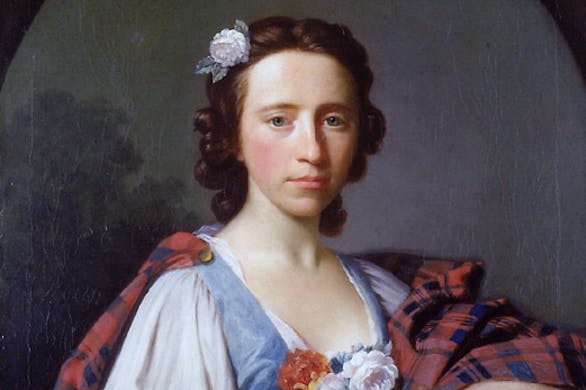Women’s History to the Rescue
There is a kind of heroism in biography itself that is seldom understood, let alone celebrated, but these books make a start.

‘After Sappho: A Novel’
By Selby Wynn Schwartz
Liveright, 272 pages
‘Flora Macdonald: “Pretty Young Rebel”: Her Life and Story’
By Flora Fraser
Knopf, 288 pages
‘The Hyacinth Girl: T. S. Eliot’s Hidden Muse’
By Lyndall Gordon
W.W. Norton, 512 pages
‘Overture of Hope: Two Sisters’ Daring Plan That Saved Opera’s Jewish Stars from the Third Reich’
By Isabel Vincent
Regnery, 278 pages
Sappho will always be an enticing subject — during women’s history month and, really, all the time, because she is one of the great literary ruins of Western civilization, a tease who exists only in fragments such as, “we live/ … the opposite/ …,” as quoted in Selby Wynn Schwartz’s irresistible account of a group of turn-of-the-20th-century women who decide to call themselves Sappho.
The amusing prologue portrays these women in school studying poetic metres with teachers incapable of imagining that their pupils were “swelling our veins with cassia and myrrh.” While teachers “went on about the aorist tense,” the Sappho contingent felt the “trees shivering in the light, everything dappled, everything trembling.”
Flora Fraser, who writes about unruly queens and princesses, grew up on a Scottish island being schooled in the biography of the “pretty young rebel” Sir Walter Scott wrote about, who played a key role in helping Charles Edward Stuart to safety after the disastrous defeat of the Highlanders at Culloden on April 16, 1746, marking the effective end of the House of Stuart’s claims to the British throne.
Ms. Fraser lived this history of the lost cause like the female descendants of the defeated American South. She follows on from Sir Walter Scott, whom she quotes about Flora Macdonald’s “spirit and presence of mind.” Macdonald had little sense of the history she was making “till she heard the world wondering at it.”
Ms. Fraser turned to other subjects, but later became captivated by a gallant image of Macdonald in a portrait kept in the effects of American revolutionaries she was writing about in “The Washingtons: George and Martha.” She wondered why American patriots had been interested in this Jacobite rebel.
Well, Flora Macdonald emigrated to North Carolina in 1774 as one of those lost causers William Faulkner wrote about so eloquently in the “Compson Appendix” to “The Sound and the Fury.” A Faulkner reader reacts to the last sentence of Ms. Fraser’s prologue with a certain frisson: “as a child I hero-worshiped Bonnie Prince Charlie, now I admire Flora Macdonald unreservedly.”
In a love letter, T.S. Eliot told Emily Hale that she was the hyacinth girl in his poem, “The Wasteland.” Lyndall Gordon privileges Hale as the first of four women who profoundly affected his creativity.
Yet Hale was never meant to be part of Eliot’s biography. He embargoed the 1,131 letters they wrote to one another until the death of the survivor. Hence her role as hidden muse, a “secret sharer” of important moments in other poems, the record of which he destroyed except for 18 of her letters.
Why Eliot sequestered his love for Hale, and what kind of person she became for him, and herself, is the biographer’s story, revealing a writer who reacted against the idea that anyone could do justice to his life even as he did an injustice to hers.
Lives do get shelved and put away, which is how Isabel Vincent begins her biography: She is in an archive, carefully managed by a white-gloved attendant who permits her to take one envelope at a time at a study table in the Victoria & Albert Archives.
The opening section, “The Leaves,” describes the “stiff brown envelopes” containing the lives of the dead that the biographer wants to revive. This kind of scene is reminiscent of that great sequence in “Citizen Kane” when the researcher enters the archival tomb hoping for a resurrection of Charles Foster Kane’s beginnings and the elusive key to his astounding and disturbing career.
Ms. Vincent’s book is about two British sisters, spinsters and passionate opera goers, who conduct a very different secret woman’s life, spiriting Jews out of Nazi Germany. Surreptitious and courageous, they deserve the full treatment they get from a biographer who rescues them from the forbidding realms of the archive.
There is a kind of heroism in biography itself that is seldom understood, let alone celebrated, but these books make a start.
Mr. Rollyson is the author of “Female Icons: Marilyn Monroe to Susan Sontag.”

